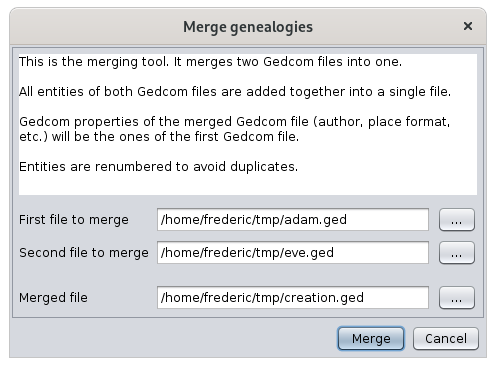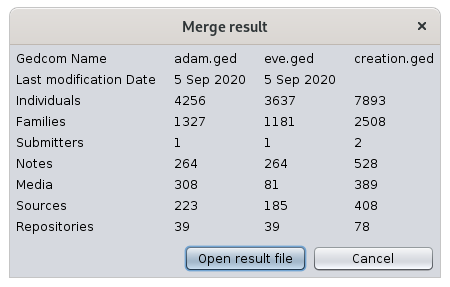Merge genealogies
This action combines two genealogies into one.
Please note it does not analyse nor merge duplicates that might appear. Another tool will do this. Refer to the Merge duplicates page for details about this.
Description
The principle of this tool is to combine two Gedcom files into one.
All data present in the two files will be in the resulting file, with the exception of the data of the header of the second file, since the resulting file can only have one header.
- The header data includes for example the format of the places, the standard used. See the Gedcom File Properties page for more details.
To avoid having entities with duplicate numbers, which is not allowed according to the Gedcom standard, the entities are all renumbered, both those of the first and of the second file.
On the other hand, if an entity (individuals, families, etc.) is identical in each of the two files, no merger will be performed and the resulting file will contain duplicates. These duplicates can then be managed with the duplicate detection tool.
Usage
This tool is simple and works in two steps.
A first window asks you for the locations of the two starting files, and the name of the resulting file.
- The first file must already exist and must be the one whose header data you want to keep.
- The second file must also exist and you specify its location.
- The third file will be created. Indicate the directory where you want this file to be created.
Then press the Merge button.
The result is immediate and the merge result is displayed.
This result is used to verify that the number of entities in the resulting file are indeed the sum of the entities of the two initial files.
You can then press the Open result file button to open the merged file in Ancestris and work with it normally.
Customization
There is no customizable element in this tool.


